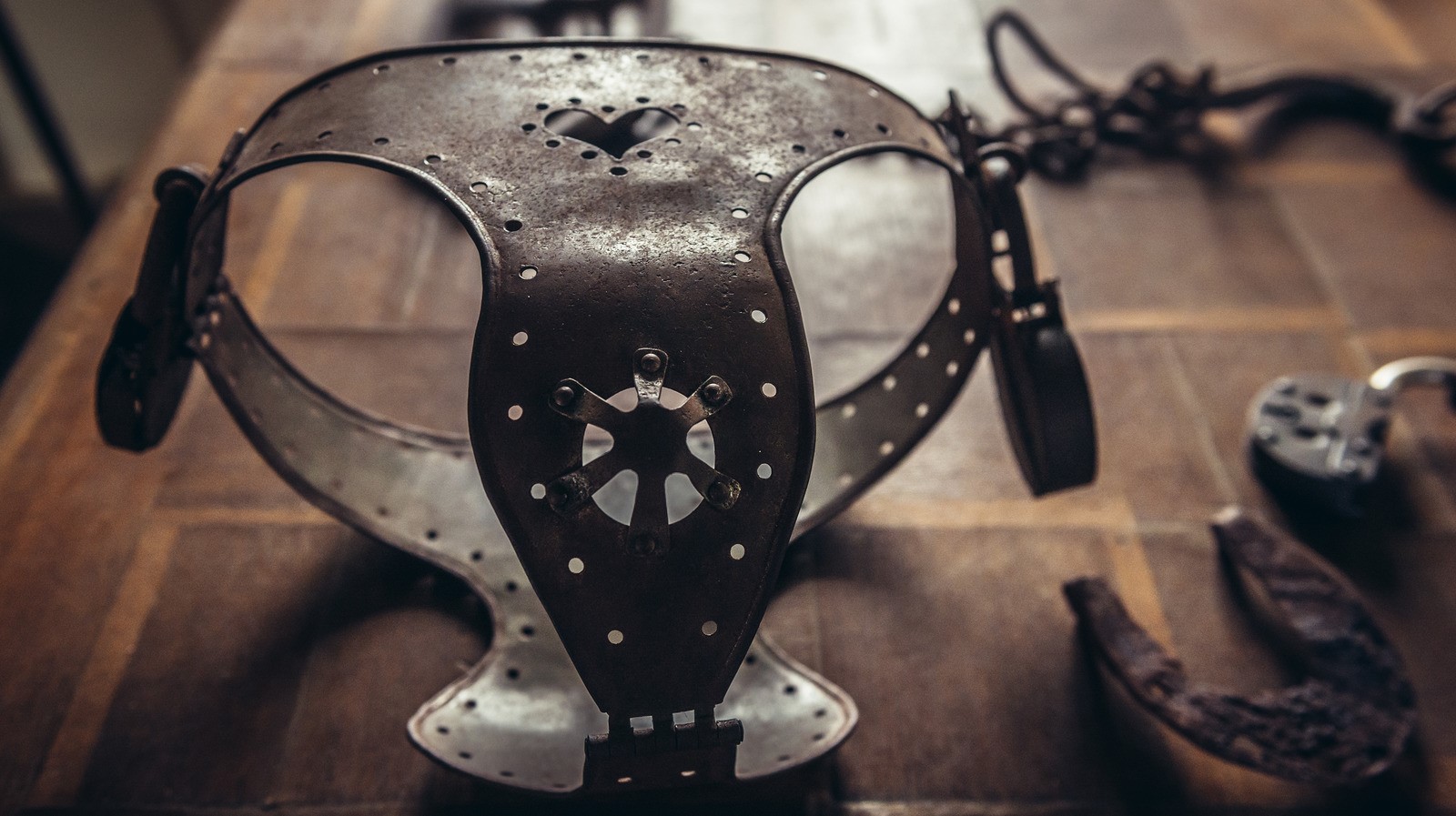
Ever wondered about the quirky and somewhat mysterious history of chastity belts? Yes, these devices, often shrouded in myths and medieval lore, have a fascinating backstory that's not only about control and virtue but also about the evolution of societal norms and personal freedoms. From their supposed use in the Middle Ages to protect a woman's virtue while her knight was away, to the debate among historians about their actual existence and use, chastity belt history is full of surprises. Let's dive into a journey back in time and uncover some of the most intriguing facts about chastity belts. You'll be surprised at what we find, debunking myths and revealing truths about these iconic symbols of chastity. Ready to get the lowdown on one of history's most talked-about inventions?
Key Takeaways:
- Chastity belts, often associated with the Middle Ages, were likely a Renaissance invention and are now mostly used in the BDSM community for consensual play and power dynamics.
- Despite their notoriety, chastity belts are one of the most misunderstood artifacts of history, serving as cultural symbols and educational tools in discussions about gender roles and historical attitudes towards sexuality.
What is a Chastity Belt?
Chastity belts, often associated with the Middle Ages, were devices designed to prevent sexual intercourse or masturbation. These contraptions were typically made of metal and locked around the waist. Let's unlock some intriguing facts about their history.
-
Origins: Contrary to popular belief, there's little evidence that chastity belts were used during the Middle Ages. Historians now think they were largely a myth, invented during the Renaissance to evoke a more "barbaric" medieval past.
-
Renaissance Tales: The first known references to chastity belts appear in 16th-century texts, not in medieval manuscripts. This timing suggests they were a Renaissance invention.
-
Patents: The oldest existing patent for a chastity belt dates back to 1889. This fact highlights the device's absence in earlier historical records.
The Purpose Behind Chastity Belts
-
Infidelity and Chastity: Some stories suggest that chastity belts were used by Crusaders to ensure their wives' fidelity while they were away. However, these tales are more myth than fact.
-
Slavery and Control: In some instances, chastity belts were used as tools of control and oppression, particularly in cases of slavery to prevent sexual assault or as a form of punishment.
-
Medical Use: In the 19th and early 20th centuries, chastity belts were sometimes recommended as a way to prevent masturbation, which was falsely believed to cause mental and physical illnesses.
Design and Materials
-
Materials: Early designs were said to be made of metal, but leather and cloth versions also existed. Metal was not always the preferred material due to its discomfort and potential for injury.
-
Comfort: Despite their purpose, some chastity belts were reportedly designed with comfort in mind, featuring padded linings and holes for bodily functions.
-
Locks: The locks on chastity belts were often complex, with some requiring unique keys. This complexity was intended to ensure that only the keyholder could remove the belt.
Chastity Belts in Modern Times
-
Fetish and BDSM: Today, chastity belts are most commonly associated with the BDSM community, where they are used consensually as part of sexual play and power exchange dynamics.
-
Women's Safety: In some parts of the world, modern versions of chastity belts have been marketed as a means of protecting women from sexual assault. However, this use is controversial and criticized for placing the responsibility for preventing assault on the victim.
-
Art and Media: Chastity belts have made appearances in art, literature, and film, often used to symbolize purity or the control of one's sexuality. They serve as powerful metaphors in various narratives.
Misconceptions and Myths
-
Widespread Use: One of the biggest misconceptions about chastity belts is that they were widely used in the Middle Ages. In reality, their use was probably rare and more symbolic than practical.
-
Hygiene: Another myth is that people in the past were unconcerned about hygiene. In fact, wearing a metal device for long periods would have been unhygienic and dangerous, leading to infections and other health issues.
-
Female Oppression: While chastity belts are often cited as tools for oppressing women, their actual historical use for this purpose is debatable. Many of the stories surrounding their use are likely exaggerated or entirely fictional.
The Fascination with Chastity Belts
-
Cultural Symbol: Chastity belts have become a cultural symbol of chastity, purity, and control over one's body and sexuality.
-
Museum Pieces: Some museums display what they claim to be medieval chastity belts, but many of these items are now considered to be forgeries or misinterpretations of their original use.
-
Collectors' Items: Despite their dubious history, chastity belts are sought after by collectors of medieval artifacts and those interested in the history of sexuality.
-
Educational Tools: They also serve as educational tools in discussions about the history of sexuality, gender roles, and the control of women's bodies throughout history.
-
Modern Redesigns: Contemporary designers have created modern versions of chastity belts for both aesthetic and practical purposes, blending historical design with modern technology and materials.
-
Psychological Aspect: The psychological aspect of wearing a chastity belt, whether in historical times or modern BDSM practices, revolves around control and the relinquishing or taking of power.
-
Legal and Ethical Concerns: The use of chastity belts raises legal and ethical concerns, especially when it involves consent issues or the potential for abuse.
-
Pop Culture References: From movies to novels, chastity belts are often used for comedic effect or as plot devices, underscoring their enduring place in popular imagination.
-
Misunderstood Artifact: Despite their notoriety, chastity belts are one of the most misunderstood artifacts of history, with much of what people "know" about them based on myths and misconceptions.
-
Symbol of Oppression or Protection?: The interpretation of chastity belts as either tools of oppression or protection changes depending on cultural, historical, and personal perspectives.
-
Role in Gender Studies: Chastity belts play a significant role in gender studies, offering insights into historical attitudes towards sexuality, purity, and control.
-
Continued Interest: The continued interest in chastity belts reflects a broader fascination with historical practices of sexuality and control, as well as the human desire to understand the past, no matter how bizarre or misunderstood it may be.
A Final Look at Chastity Belts
Chastity belts, often surrounded by myths and misconceptions, have a fascinating history that stretches back centuries. Contrary to popular belief, their use wasn't widespread in medieval times for enforcing fidelity. Instead, most stories about them from that era are now considered more fiction than fact. Fast forward to the Renaissance and beyond, these devices found their place more in literature and humor than in actual practice. Today, they're viewed through a lens that combines historical curiosity with a critical examination of past attitudes towards gender and morality. Understanding the true story behind chastity belts reveals much about human culture, societal changes, and the evolution of personal freedoms over time. So, next time you hear a tale about these intriguing artifacts, you'll know there's more to the story than just medieval lore.
Frequently Asked Questions
Was this page helpful?
Our commitment to delivering trustworthy and engaging content is at the heart of what we do. Each fact on our site is contributed by real users like you, bringing a wealth of diverse insights and information. To ensure the highest standards of accuracy and reliability, our dedicated editors meticulously review each submission. This process guarantees that the facts we share are not only fascinating but also credible. Trust in our commitment to quality and authenticity as you explore and learn with us.


